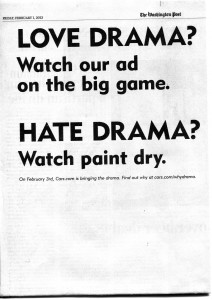Are you reinforcing your message?
I had a conversation with a potential client the other day, and she was saying she wasn’t sure she needed to continue advertising as most of her customers came from word of mouth/referral.
Word-of-mouth and referrals are very powerful marketing forces, but they do not operate in a vacuum. Most people take their time making a decision, even when they have a referral (or referrals) in hand. People often like to do some research themselves, even when they have glowing recommendations (just because a hair salon did wonders for straight-haired Jane does not mean they can do wonders for curly-haired Joan). This is why you need to reinforce your message.
Often, you need to remind your potential clients/customers of why they should consider working for you. You also need to let them know the basics: how to contact you, where you are located, who you work with, how much you charge, what your services/products are.
How do you reinforce your message? You can do it several ways:
1. Have an updated, attractive, easy-to-navigate website.
2. Have marketing materials such as ads, brochures, etc. as necessary for your target. For example, if your target audience reads specialized journals, it makes sense to advertise there. If your target walks past your store, it may make sense to have brochures or information cards available.
3. Have an updated, complete LinkedIn profile and on other social media channels as appropriate.
Relying on word of mouth without reinforcing the positive referral will not always result in business for you and could actually work against you.
What are you doing to reinforce your message?
About Deborah Brody
Deborah Brody writes and edits anything related to marketing communications. Most blog posts are written under the influence of caffeine.




